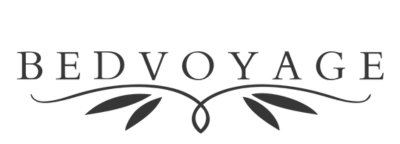Rayon vs Viscose Bamboo. What is the Difference?
Have you seen the term rayon or the term viscose when looking at bamboo textiles and wondered what's the difference? Both terms are virtually interchangeable, as it refers to the process of breaking down a bamboo fiber into a thread or yarn. BedVoyage uses Moso bamboo, which is a super fast growing grass that is farmed, not taken from natural forests. Our linens are manufactured in some of the largest home textile factories in India, and are panda-friendly. Our factories receive the annual award for Social Responsibility and Facility Code of Conduct Compliance, from Intertek. This is a worldwide group of testing laboratories, also called SMETA. BedVoyage’s 100% bamboo bed sheets are made using Oeko-Tex Made In Green approved fibers, which are tested to be safe for babies. So if they are safe for babies, they are safe for adults too!
What is Viscose Bamboo?
Wikipedia states that “Viscose rayon is a fiber made from regenerated wood cellulose.” The cellulose of bamboo means that it comes from the plant itself, which is broken down from the pulp of the bamboo plant. Viscose or Rayon are the most popular terms for describing bamboo textiles and its used to make many items, notably: tablecloths, bed linens and slip-covers. Viscose is also used in the making of kitchen wrap, which is the type you use when storing food. Viscose has been used widely for many years, in many applications.
What is Rayon Bamboo?
Wikipedia states that “Rayon is a manufactured regenerated cellulose fiber’ which means basically the same as the definition of viscose. This is why you’ll see both words used in the describing of bamboo fiber products.
Rayon fibers are considered neither natural, nor artificial. The term ‘regenerated’ refers to the fact that a chemical change does happen in the processing of bamboo. So the reformed or reconstructed bamboo cellulose fiber is called ‘regenerated cellulose.’ The benefits of rayon from Bamboo bedding are many more than cotton. Some benefits would be that bamboo is hypoallergenic and thermal regulating. It's incredibly soft, helps you sleep cooler, is moisture wicking and resists odor and bacteria. People that suffer from skin sensitivities or allergies are comforted and soothed by bamboo fibers, as they greatly reduce their symptoms. Bamboo gets softer as you wash it and is an easy-care fabric.
Common Benefits of Rayon and Viscose Bamboo
Both Rayon or Viscose are very absorbent and take dye very easily. BedVoyage uses Fiber Reactive dye as its perfect for all-natural fibers. Those include cotton, viscose bamboo, silk, wool and even wood and paper. The intensity of the colors can be from light pastels to very vibrant and deep colors. Our linens are colorfast, so the colors will stay true, wash after wash. Reactive dye molecules combine with the molecules of the fabric to create a permanent bond, and become part of the fabric. Our sheets are are also free of formaldehyde coating, unlike cotton sheets. Any sheets that say they’re ‘wrinkle resistant’ mean they’ve been coated with formaldehyde, which is a toxic chemical.
Benefits of sleeping on bamboo sheets:
- Hypoallergenic: luxuriously soft to the touch
- Sleep cooler: fibers adjust to your body’s temperature throughout the night
- Non-pilling: woven with a tight twill weave
- Stay dry: wicks, absorbs and evaporates moisture 3x faster than cotton
- Eco-friendly: made from organically grown bamboo
- Oeko-Tex Standard Made In Green Certified: safe for babies
- Fresher longer: resistant to bacteria and odors
- 100% viscose from bamboo, not a blend like many other brands
How to Wash Bamboo Sheets:
VERY IMPORTANT: Wash the sheets BEFORE using to allow for the shrinkage that happens during the first washing of bamboo. You’ll think they’re way too big if you don’t wash first, as we’ve oversized the linens to allow for that shrinkage.
Laundering: using a gentle liquid detergent, wash the linens in cool to warm water, then dry on medium. Removing immediately will reduce wrinkling. WEIRD fact: Bamboo comes out of the washer feeling stiff and canvas-like, that’s normal so don’t worry that you’ve harmed your linens! We tease and say 'they want to go back to being a tree'.
Wash Separately: for best results, wash the sheets separate from other items, especially towels. Towels can cause friction and pilling and produce a lot of lint, which can stick to sheets. Our bamboo towels are woven with a tight twill weave which creates the beautiful sheen and keeps them from pilling.
Shop Bamboo Towels HERE.
Recommended Detergents:
We recommend eco-friendly liquid detergents such as Ecos, Aspen Clean, Seventh Generation and Mrs. Meyer’s Clean Day. Avoid liquid chlorine bleach, fabric softener, dryer sheets, and washer or dryer balls. Harsh detergents can do damage to fine linens, so we recommend a gentle one. Bleach can weaken the rayon fibers and reduce the life of the linens. Fabric softener and dryer sheets can leave a film on the fabric, which also reduces the moisture-wicking properties. Dryer sheets can also leave a film, and cause discoloration. Washer and dryer balls can cause pilling.
Why not switch to bamboo sheets and go Make Your Bed The Best Place On Earth! Then you can sleep on the something as fabulous as bamboo!
For more information on our luxury bedding:
https://bedvoyage.com/blogs/news/ten-reasons-to-invest-in-quality-bed-sheets
https://bedvoyage.com/blogs/news/how-to-wash-bamboo-sheets-and-frequently-asked-questions
https://bedvoyage.com/blogs/news/why-hot-sleepers-are-obsessed-with-these-bamboo-sheets
https://bedvoyage.com/blogs/news/what-are-bamboo-sheets








